Maintaining the pristine beauty of marble tiles requires specific care and gentle cleaning methods. Marble, as a naturally porous stone, demands particular attention to prevent staining and etching.
This guide aims to equip you with the knowledge and techniques needed to keep your marble tiles looking as elegant and lustrous as the day they were installed. Whether you’re dealing with light maintenance or deep cleaning, understanding how to clean marble tiles effectively can preserve their beauty and longevity.
Regular cleaning is pivotal in maintaining marble tiles’ elegance and preventing damage. Because marble is susceptible to stains and scratches, prompt and proper care is crucial.
Ignoring spills or using harsh cleaners can permanently mar its surface, diminishing its natural beauty and potentially affecting the value of your space.
Gather Materials Needed
To properly clean your marble tiles and maintain their luster without causing damage, ensure you have the following materials:
- Mild detergent or stone soap
- Soft cloth or sponge
- Warm water
- Bucket
- Non-abrasive mop
- Soft, dry towel for drying
Cleaning Process
Step 1
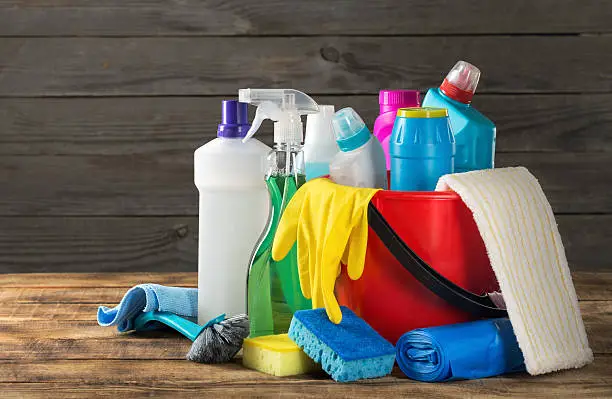
Begin the cleaning process by preparing your solution. Add a few drops of mild detergent or stone soap to a bucket, then fill it with warm water. The temperature of the water should be lukewarm neither too hot nor too cold to ensure it’s gentle on the marble surface.
Using a mild detergent is critical; harsh chemicals can etch the surface of the marble, leading to permanent damage. Stir the mixture gently to combine the detergent with the water, creating a soapy solution.
This solution will be effective in removing dirt and grime without compromising the integrity of the marble tiles.
Step 2
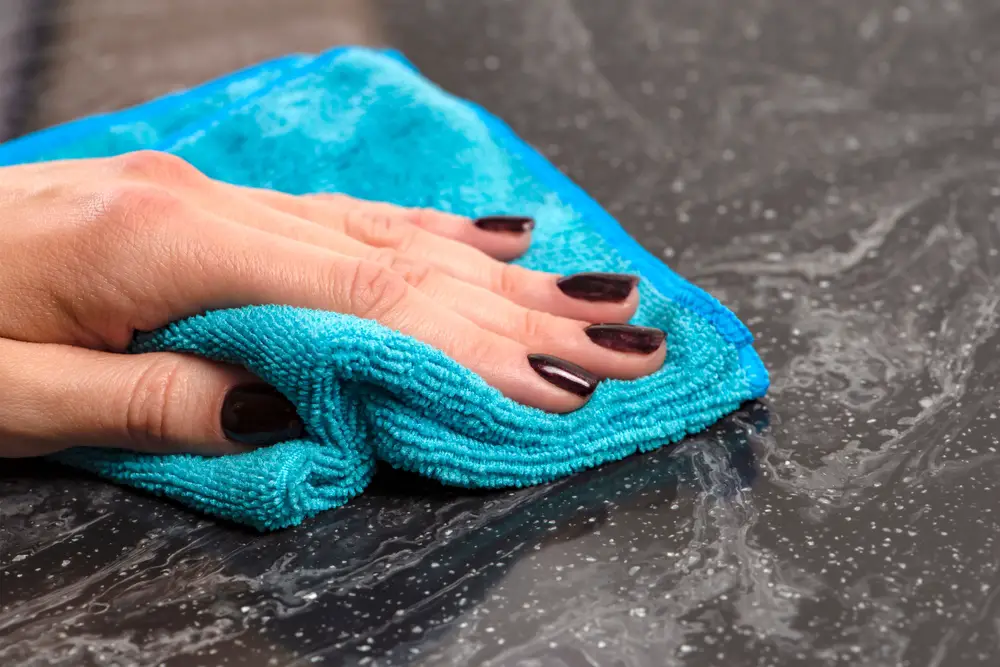
After you have your mild soap solution ready, dip a soft cloth or sponge into the mixture. It’s essential to use a soft material to avoid scratching the marble’s surface.
Once the cloth or sponge is sufficiently soaked, wring it out to remove any excess solution. The goal is to have a damp not wet cloth or sponge that can clean the tiles effectively without leaving too much water on the surface.
Excessive water, if not dried properly, can penetrate the marble, leading to possible damage or staining over time.
Step 3
With your cloth or sponge properly prepared, proceed to gently wipe the surface of the marble tiles. Use smooth, circular motions to lift and remove dirt, making sure to cover every area for a thorough clean.
Avoid applying too much pressure, as marble can be susceptible to scratching. Focus on persistent spots by softly dabbing them rather than scrubbing. This method ensures that you clean effectively without risking any harm to the glossy finish of the marble.
Frequent rinsing of the cloth or sponge in the soap solution may be necessary to ensure it remains clean and effective throughout the process.
Step 4
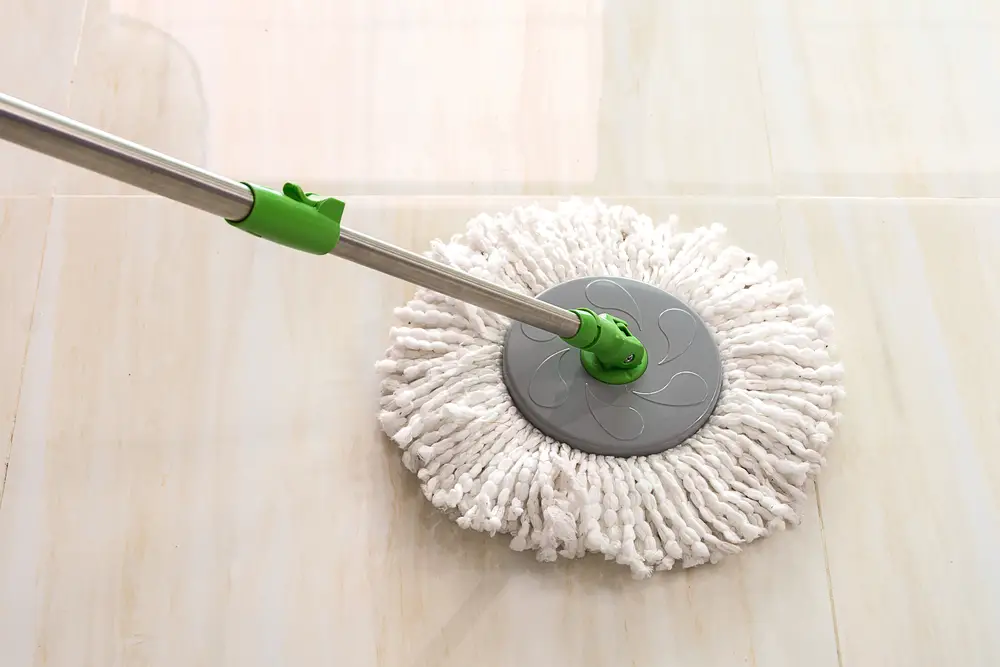
For cleaning larger expanses of marble flooring, a non-abrasive mop can be an efficient tool. After completing the step of gently wiping with a cloth or sponge, transition to a soft, non-abrasive mop for the broader sections.
Immerse the mop into the same mild soap solution, ensuring it is well-saturated before wringing it out to a damp state, similar to the cloth approach.
Sweep the mop across the floor in smooth, steady strokes, being careful not to saturate the marble with water. This method allows for quick and effective cleaning of larger areas without compromising the marble’s integrity.
Remember to regularly rinse the mop in the soapy solution to keep the cleaning process efficient and to avoid spreading dirt.
Step 5
Continuously rinse the cloth or sponge in the cleaning solution throughout the cleaning process. This step is crucial to avoid transferring dirt and grime back onto the marble surfaces you’re attempting to clean.
Each time you rinse, ensure the cloth or sponge is free of debris before reapplying it to the marble. This practice not only enhances the effectiveness of your cleaning effort but also prevents the potential for scratching or staining from the grime being spread across the surface.
Maintaining a clean tool is key to achieving a spotless finish on your marble tiles.
Related Topics:
Rinsing
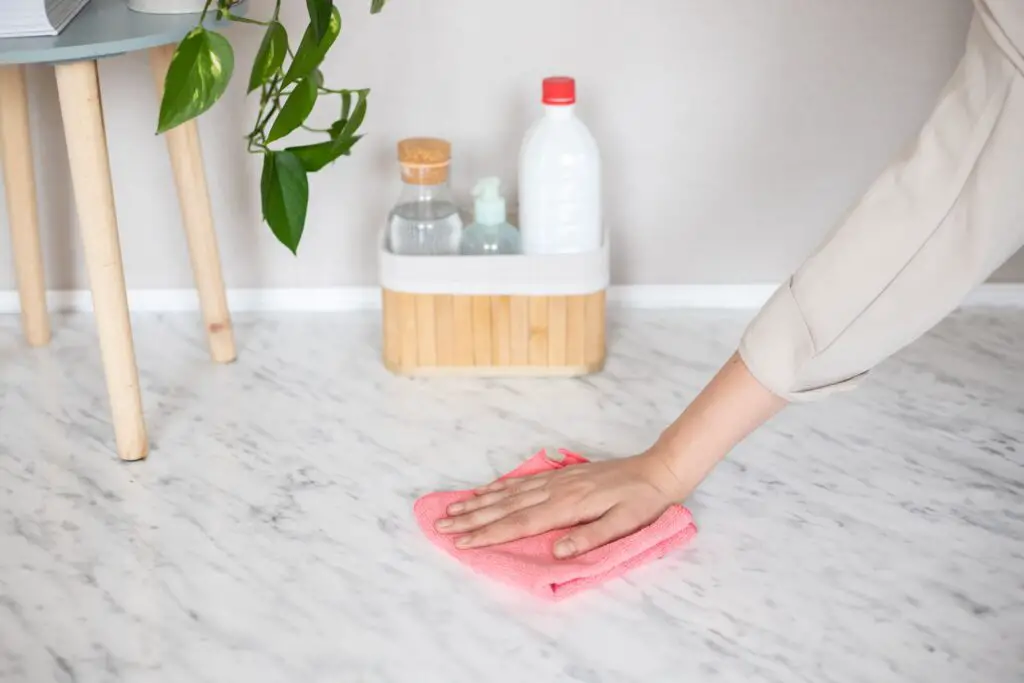
Empty the bucket and refill with clean, warm water
After you’ve completed the thorough cleaning of your marble surfaces using a soap solution, the next critical step is to rinse away any soap residue. Begin by emptying the bucket that contained the soapy mixture.
Thoroughly clean it to remove any remaining soap, ensuring that no suds are left. Then, refill the bucket with clean, warm water. The temperature of the water should be mild not too hot nor too cold to effectively rinse the marble without causing any thermal shock to the stone.
Warm water helps in removing the soapy residue more efficiently, leaving your marble looking pristine and shiny.
Rinse the marble surface with a soft cloth dipped in clean water
Once the soapy residue has been thoroughly scrubbed off, it’s imperative to rinse the marble surface with a soft cloth dipped in clean water.
Gently wipe the entire area to ensure that no trace of soap remains. This step is essential as soap residue can leave a dull film on the marble, diminishing its natural shine and beauty.
Use a well-wrung cloth to avoid saturating the marble with water, as excessive moisture can penetrate through seams or imperfections, potentially causing harm.
Repeat the rinsing process several times with fresh clean water to guarantee the complete removal of any lingering soap film, ensuring your marble surfaces are left sparkling clean.
Change the rinsing water as it becomes dirty
It’s vital to keep an eye on the clarity of the water in your bucket during the rinsing process. As you continue to clean the marble surface with your cloth, the water can become murky with the dirt and soap residue picked up from the tiles.
Using dirty water to rinse the surface may result in streaks or a filmy layer being left behind on the marble, counteracting the efforts made to clean it. Therefore, whenever you notice the water turning dirty, stop and change it for fresh, clean, warm water.
This ensures that each rinse aids in enhancing the natural shine of your marble tiles without leaving behind any unwanted streaks or residue.
Drying
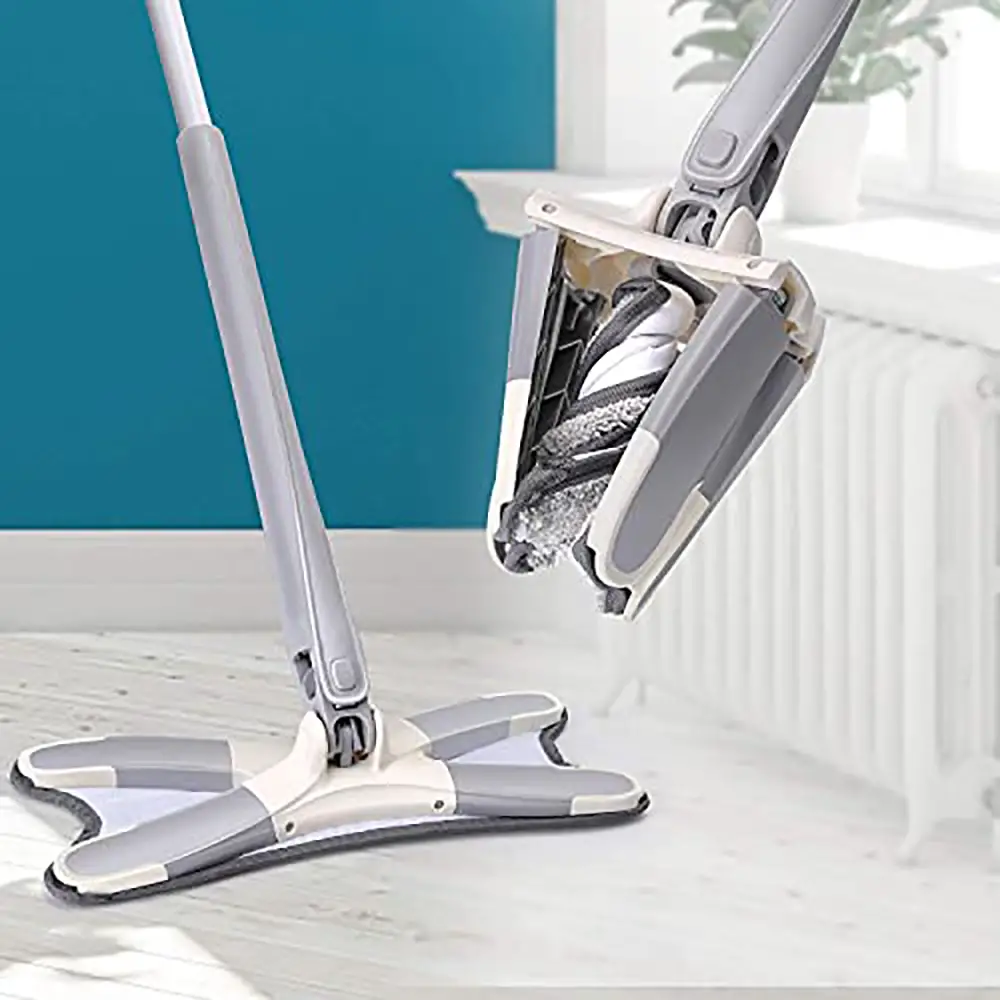
Dry the marble surface with a soft, clean towel
Immediately after the rinsing process, it’s crucial to thoroughly dry the marble surface using a soft, clean towel. Gently pat the marble dry, making sure to absorb all the moisture.
This step is imperative as it prevents the formation of water spots, which can mar the surface’s appearance. Water spots occur when droplets evaporate, leaving behind mineral deposits.
By ensuring the marble is promptly and effectively dried, you preserve its lustrous finish and keep it looking pristine and spotless.
Buff Gently in Circular Motions for an Extra Shine
Once the marble surface is completely dry, take a clean, soft microfiber cloth or a chamois to buff the surface. Using light pressure, move the cloth in gentle circular motions across the marble.
This technique helps distribute any remaining moisture evenly, contributing to an extra level of shine. Furthermore, the circular buffing motion works to enhance the marble’s natural luster without the use of harsh chemicals or abrasive materials.
Aim for a consistent, smooth finish across the entire surface, bringing out the beauty and depth of the marble’s natural patterns.
Maintenance Tips
Avoid Acidic Cleaners or Vinegar
It’s crucial to avoid the use of acidic cleaners or vinegar when maintaining marble surfaces. These substances can etch the marble, leading to dull spots or even permanent damage.
The acidic nature of these cleaners reacts with the calcium carbonate in marble, causing discoloration, corrosion, or pitting. Instead of resorting to harsh chemicals, opt for pH-neutral cleaning solutions specifically designed for use on natural stone.
Such precautions will ensure that your marble retains its elegant appearance and durability over time.
Immediately Clean Up Spills
Quick action is key when dealing with spills on marble surfaces, particularly with acidic substances like coffee, wine, tomato sauce, or lemon juice. These can cause staining and etching if not addressed promptly.
It is advisable to blot spills with a soft, clean cloth immediately – rubbing can spread the spill. After blotting, rinse the area with water and dry it thoroughly to prevent any moisture from seeping into the marble.
Adopting this immediate clean-up practice will help maintain the marble’s pristine condition and avoid the need for extensive repairs or treatments in the future.
Use Mats or Rugs in High Traffic Areas
Placing mats or rugs in areas that receive a lot of foot traffic is an essential step in preserving the integrity of marble floors. These protective coverings act as a barrier, absorbing the impact of footsteps and minimizing the risk of scratches or scuffs that can mar the surface of the marble.
It’s advisable to choose rugs or mats with a non-slip underside to prevent them from moving and to ensure safety.
Additionally, regularly cleaning these floor coverings will prevent the buildup of grit and debris that could be transferred onto the marble surface, providing an extra layer of protection for your elegant flooring.
Consider Applying a Marble Sealer for Added Protection
For an additional layer of defense against stains, etching, and wear-and-tear, applying a marble sealer can be highly beneficial. Sealers work by penetrating the stone and creating an invisible barrier that repels water and oil-based substances, making it easier to clean up spills before they can cause damage.
However, it’s crucial to follow the manufacturer’s instructions carefully when applying a sealer. Some sealers require the marble surface to be completely clean and dry and may need a specific method of application, such as using a soft cloth or brush.
Typically, reapplication is recommended every 6 to 12 months, depending on the product and the amount of traffic the marble surface receives.
By taking this preventive measure, you can significantly extend the life and beauty of your marble surfaces.
Conclusion
Maintaining the pristine beauty of marble tiles not only enhances the aesthetic appeal of your space but also contributes to the longevity and durability of the flooring. Proper care, coupled with gentle cleaning methods, is paramount in preserving the natural elegance and luster of marble.
Employing a routine that includes the use of mild detergents, soft cleaning instruments, and immediate attention to spills can prevent staining and etching, keeping your marble surfaces as radiant as the day they were installed.
Furthermore, incorporating preventative measures such as mats in high-traffic areas, utilizing marble sealers, and avoiding acidic cleaners can significantly bolster the marble’s resistance to wear and tear.
By adhering to the guidelines and techniques outlined in this guide, you can ensure your marble tiles remain a timeless and luxurious feature of your home, reflecting a clean, well-maintained, and sophisticated environment.
FAQs
Can I use vinegar to clean marble surfaces?
No, it’s strongly advised against using vinegar to clean marble surfaces. Vinegar is acidic and can etch the marble, causing dull spots and damage to the finish. It’s best to stick to pH-neutral cleaners specifically formulated for marble.
How can I remove a stain from my marble flooring?
For most stains, creating a poultice out of baking soda and water is an effective remedy. Apply the paste to the stained area, cover it with plastic wrap, and leave it for 24 to 48 hours. The baking soda helps draw out the stain from the marble. However, for persistent or complex stains, consulting a professional is recommended.
Is it necessary to seal marble countertops and flooring?
Yes, sealing marble surfaces is highly recommended as marble is porous and can absorb liquids, leading to staining and damage. Sealing creates a protective barrier, making it easier to clean spills and preventing absorption. It’s essential to regularly check the seal and reapply as necessary.
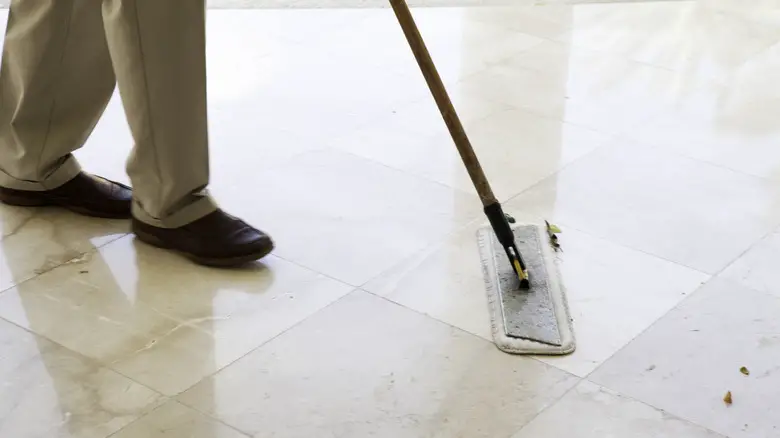
1 thought on “How To Clean Marble Tiles: DIY Guide”